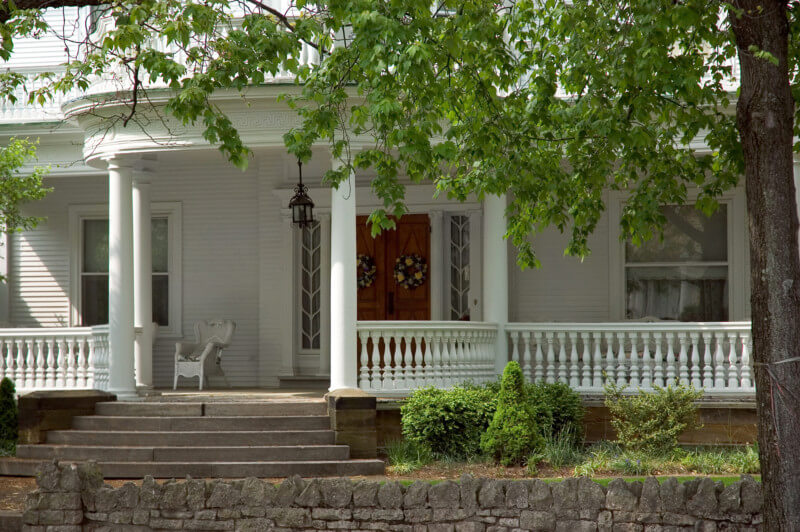Exterior Wood Columns
Homes can serve as an extension of us. Quality homes of the past often had decorative, exterior wood columns to support porches and structural overhangs. These columns showed intricate workmanship and typically followed certain rules of proportion and style established dating as far back as Greek and Roman times. Column styles such as Doric, Ionic, and Tuscan follow such shapes with smooth or fluted shafts. However, some exterior wood columns differed based on taste and budget.
Columns are typically supplied in three sections: a base, shaft, and capital. These sections are stacked on-site at the home for final assembly. Shafts are hollow (barrel-like) and typically made via stave construction to provide stability and equilibration to the environment.

Victorian Front Porch with Custom Wood Columns and Spindles
Turned wood columns and decorative spindles bring historic charm to this custom Victorian-style front porch.
Exterior Wood Columns – Species
While no type of wood lasts forever outdoors, some choices for manufacturing exterior wood columns are better than others. Sapele and African mahogany are both current popular choices among architects and quality builders. These woods are among the best to withstand the elements and at cost-effective means. Maintaining good paint coverage and proper drainage of the lower substrate are also important for column longevity.
Wood Column Replication
If all of the columns in a home are being replaced, there is a bit of artistic freedom to create new ones with information that the homeowner or builder provides to the supplier. If only some of the columns are being replaced, near-exact replication is necessary and requires even more specific information on measurements for columns to match according to the naked eye. Realistically speaking, if the diameter or radius of a column base is a minute fraction different, this small detail will not be seen as each would be spaced 8-10 feet apart.
Typically, photos of the original columns and specific measurements of the diameter and length of the shaft, as well as a section of the cap and base are required when conducting an exterior wood column replication. These can be useful to hone in on the details of the project and determine costs. CAD drawings, which show even more detail, are also beneficial.
Diameters are most easily completed by translating circumference, which can be done by measuring with tape. The heights of the shaft, base, and capitol sections must be provided for accurate replication.
Who We Are
H.A. Stiles has built a reputation as being one of the premier suppliers of turned wood components such as wood columns, balusters, and more for a broad range of applications.
If you need a woodworking architectural project, production-run wood components in bulk quantities, or custom wood parts for manufacturing, please give us a call for a no-obligation estimate. Not ready to reach out but want to learn more? Visit our main wood columns page here! Either way, we look forward to the opportunity to serve you.
